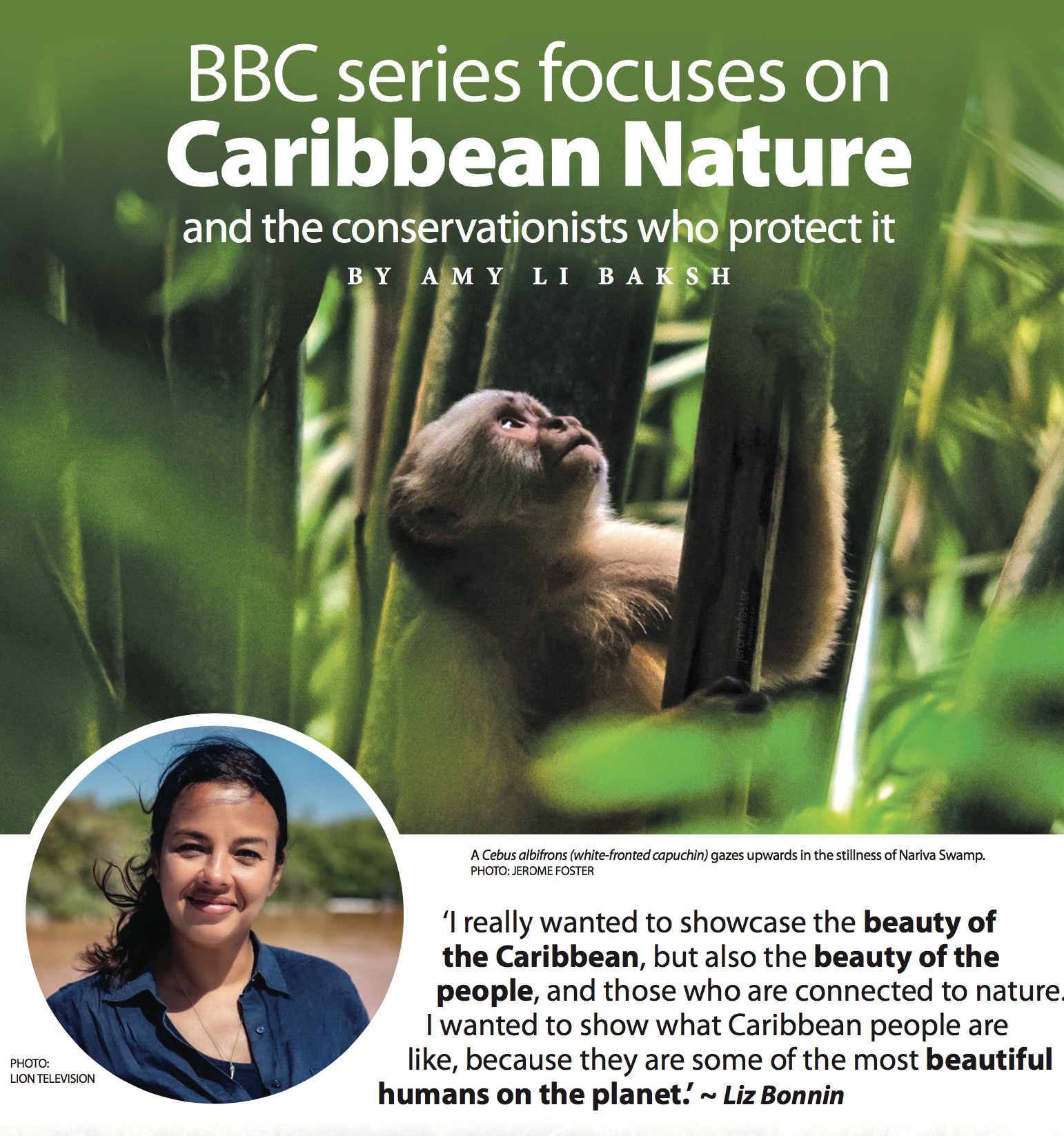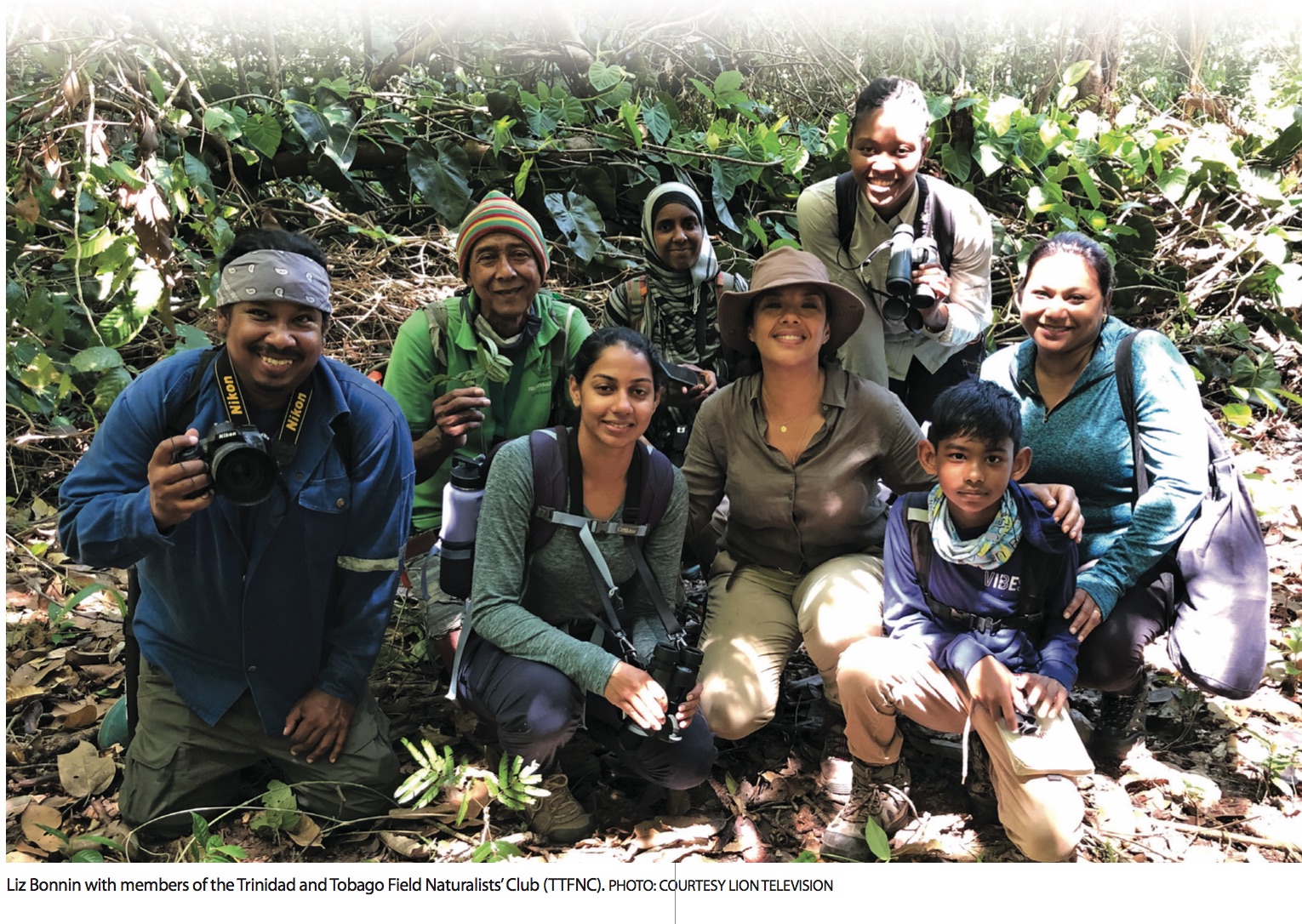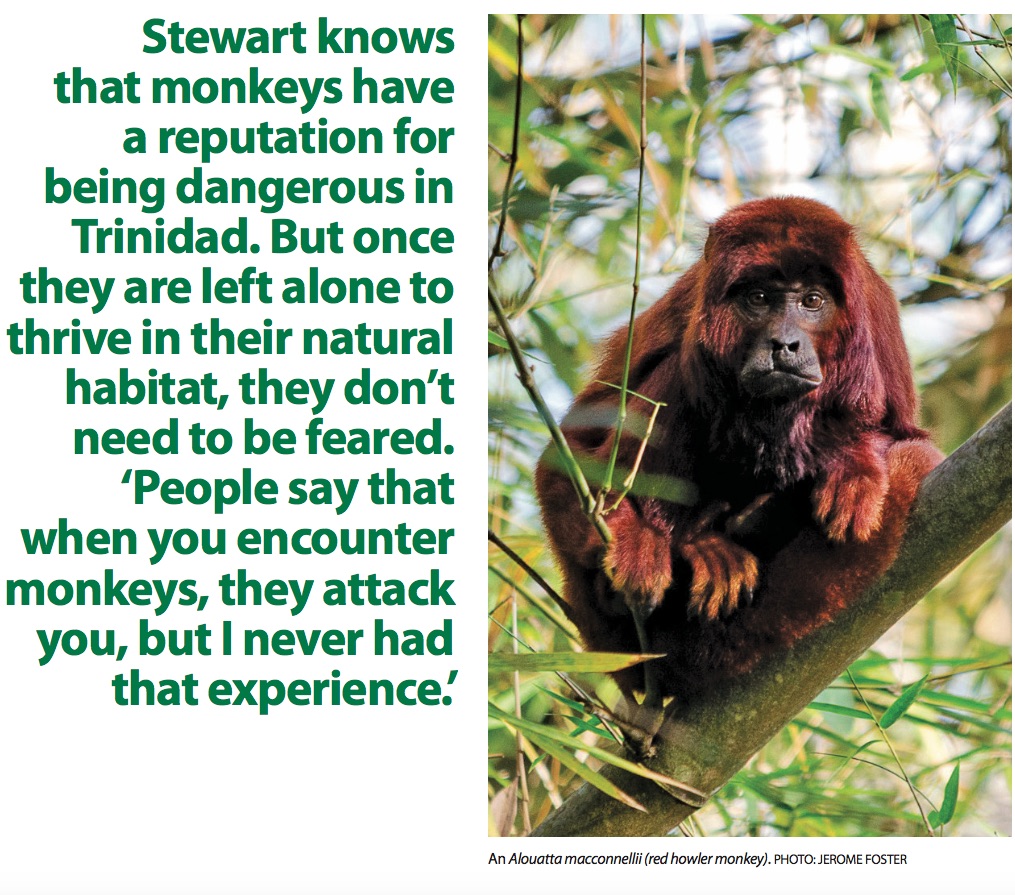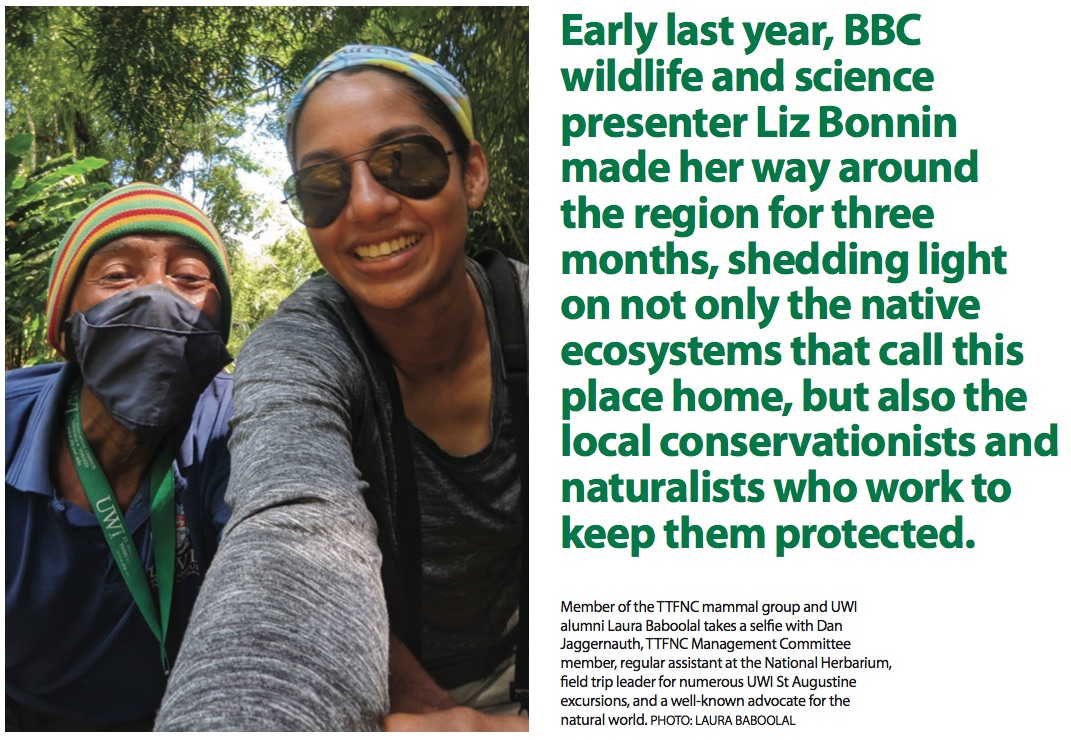
As Caribbean people, we are never too far away from the green that surrounds us. Even in the most bustling of cities, you can look up and see a flash of emerald mountainside or the endless blue maw of the ocean. You hear the cry of parrots and macaws returning home in the sunset, the call of cicadas through the night.
Not all of us pay attention to the wild world that surrounds us – tropical ecosystems that are unique and only found right here – but our rich biodiversity is championed by a series of unassuming everyday heroes who find ways to work within their limited resources to protect, research and spotlight the Caribbean’s incredible flora and fauna.
Early last year, BBC wildlife and science presenter Liz Bonnin made her way around the region for three months, shedding light on not only the native ecosystems that call this place home, but also the local conservationists and naturalists who work to keep them protected, for a series called Liz Bonnin’s Wild Caribbean. Her last stop was a visit to Trinidad – her ancestral home.
For help navigating the Trinbagonian landscape, one of the first steps was reaching out to The UWI’s own Dr Amy Deacon, Senior Lecturer of Zoology in the Department of Life Sciences. Dr Deacon, who is also an active member of the historic Trinidad and Tobago Field Naturalists’ Club (TTFNC), was the ideal person to give ideas on where to go to showcase the work being done across the country.

“They wanted to get some information on the ground about suitable projects that would be good to include in the series,” said Dr Deacon during our interview.
Interestingly, the production team didn’t only want to focus on the wildlife itself, but also wanted to shed light on the human aspect of conservation.
“They were very much saying that we want to meet the Caribbean people that are doing things to conserve wildlife,” she said.
With that in mind, she gave them a handful of projects to think on, and one that piqued their interest was the work being done around the Nariva Swamp by a group from the TTFNC including UWI alumni Laura Baboolal and Sinead Stewart.
Both Laura and Sinead are part of the TTFNC mammal group, who conduct surveys of the Nariva Swamp for red howler monkeys and white-fronted capuchins. These monkeys, endemic to Trinidad, are the only native species of monkeys found in the Caribbean.
“We [the TTFNC] do general monthly trips, like hiking trips and nature walks. And then there are subgroups that focus on mammals, birds, insects, and the different categories,” said Baboolal, who leads the monthly mammal trips.
During her time at UWI, she completed a Bachelor’s degree in Environmental Management with a minor in Zoology, and then a Master’s degree in Biodiversity Conservation and Sustainable Development in the Caribbean.
Animals have always been a part of her life. Growing up, she had a love for dogs and a curiosity about the wildlife around her. Her childhood home in Sangre Grande, with the edges of the forest right behind, was her first introduction to the natural world.
“When I was younger, I would always be in the bush somewhere or in a tree somewhere,” she said with a laugh.
Now, she is putting that love for the wild to work researching our two species of local monkeys – both endangered.
One of their most interesting sightings that also ended up making it into the documentary was an unusual behaviour of the white-fronted capuchins with the local cannonball fruits that grow nearby. It was fellow mammal group members Sabira Ali and Sinead Stewart who were able to observe that the capuchins were waiting for the fruits on the ground to rot, and then breaking them open and feeding on the insects that are attracted to the rotting fruit feast.
Stewart knows that monkeys have a reputation for being dangerous in Trinidad. But once they are left alone to thrive in their natural habitat, they don’t need to be feared.

“People say that when you encounter monkeys, they attack you, but I never had that experience,” she said.
On her trips, over time she was able to observe the monkeys feeding, fighting for territory, and even “...eating the grubs from cannonball [fruits]; which I’ve heard about, but there’s not a lot of documentation about it”.
This exciting find was a culmination of many years of fascination with nature. “I was one of those children who used to play in the yard, go and look at the ants and the caterpillars,” Stewart told me.
She went on to do her undergrad studies in Environmental and Natural Resource Management at The UWI, and followed up with a Master’s degree in Biodiversity Conservation and Sustainable Development in the Caribbean, similar to Baboolal.
“My thesis was on the density of the red howler monkey in the Bush Bush Wildlife Sanctuary, and that is where I got into monkeys,” said Stewart.
And she was hooked. But the task of observing monkeys in the wild can require a lot of patience. You never know when they are going to show up.
“They are so elusive,” she chuckled.
For her thesis, she couldn’t include white-fronted capuchins because she only saw them twice on her excursions. But, once her studies were complete, she went back out into the field, and there they were.
For Liz Bonnin and the BBC team, their trip into Nariva seemed to be blessed with good luck. Speaking in hushed tones, you can see the excitement in the documentary episode as the team realised, from the sound of breaking branches, that there are monkeys in the trees nearby.

“They were able to get on film both species of the monkeys on the same day, which is very rare,” said Baboolal. “They were very lucky.”
For Bonnin, who has roots in Trinidad, these sightings were one of the highlights of her travels across the Caribbean for the documentary series.
“I forget I’m on telly sometimes because I am so passionate about wildlife,” she told me. “Selfishly, just to have the experience of seeing one of the rarest animals on the planet, not only in Trinidad, the white-fronted capuchin, in Bush Bush in Nariva Swamp.… I was embarrassingly forgetting I was being filmed!”
But, exciting as these animal encounters were, at the core of these stories were the people who made them possible.
“I really wanted to showcase the beauty of the Caribbean, but also the beauty of the people, and those who are connected to nature,” said Bonnin. “I wanted to show what Caribbean people are like, because they are some of the most beautiful humans on the planet.”
In a space like Trinidad, which holds some of the richest biodiversity in the world, not everyone sees the interconnectedness between themselves and nature around them. But those who have dedicated their lives to conservation work understand that what we have here is truly special, and should be protected.
Liz Bonnin’s Wild Caribbean aims to tell this story to an international audience, but it is a story that is valuable to the Caribbean people as well. In the Trinidad and Tobago episode, it traces not only the story of the TTFNC’s mammal exploits, but also the important work being done by other conservation groups like the El Socorro Centre for Wildlife Conservation and Wa Samaki Ecosystems. Although the series is not currently available for viewing locally, a public screening will be organised by the TTFNC, so those interested in learning more can keep an eye on their social media for updates.
As the world sees the impact of climate change and other effects of human consumption, it is important to recognise that there is important work being done right on our own doorsteps – sometimes with extremely limited resources, but still finding a way to make a difference. We should celebrate the people who are committed to keeping our region livable for the next generation of Caribbean children, off in a tree somewhere or in their backyards looking at ants and caterpillars.